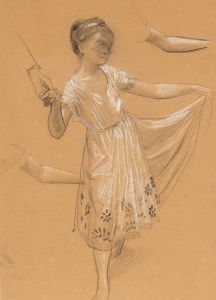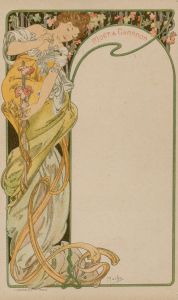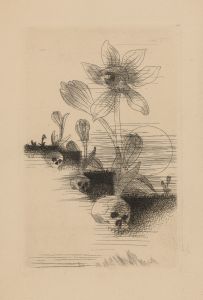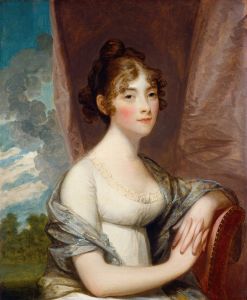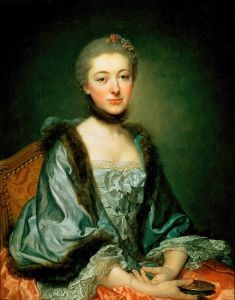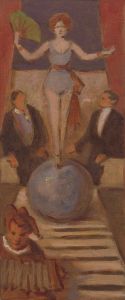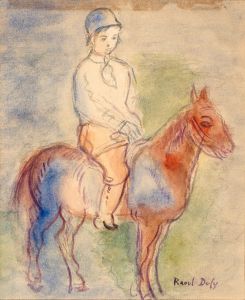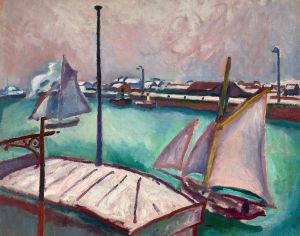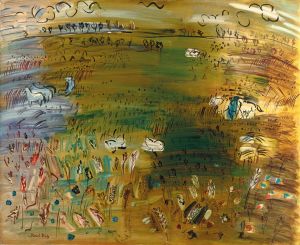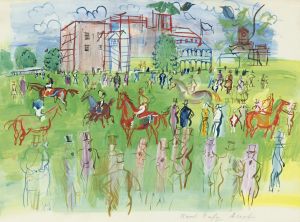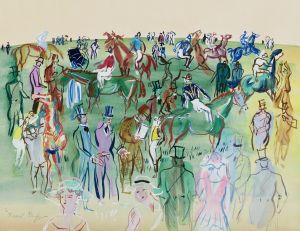
Portrait de Berthe
A hand-painted replica of Raoul Dufy’s masterpiece Portrait de Berthe, meticulously crafted by professional artists to capture the true essence of the original. Each piece is created with museum-quality canvas and rare mineral pigments, carefully painted by experienced artists with delicate brushstrokes and rich, layered colors to perfectly recreate the texture of the original artwork. Unlike machine-printed reproductions, this hand-painted version brings the painting to life, infused with the artist’s emotions and skill in every stroke. Whether for personal collection or home decoration, it instantly elevates the artistic atmosphere of any space.
Raoul Dufy, a prominent French Fauvist painter, is celebrated for his vibrant use of color and fluid brushwork, which are evident in his diverse body of work. Among his many creations is "Portrait de Berthe," a painting that exemplifies his unique style and artistic vision. While specific details about this particular painting are limited, understanding Dufy's broader artistic context provides insight into the significance of his work.
Raoul Dufy was born on June 3, 1877, in Le Havre, France. He began his formal art education at the École des Beaux-Arts in Paris, where he was influenced by the Impressionists and later by the Fauvist movement, which emphasized bold colors and expressive forms. Dufy was particularly inspired by the works of Henri Matisse, a leading figure in Fauvism, and this influence is evident in his use of vivid colors and dynamic compositions.
Throughout his career, Dufy explored various subjects, including landscapes, cityscapes, and portraits. His work often captures the joie de vivre of early 20th-century France, with scenes of leisure, music, and fashion. Dufy's style is characterized by its lightness and spontaneity, often described as a "musical" quality due to its rhythmic and harmonious use of color and line.
"Portrait de Berthe" fits within this context of Dufy's oeuvre, showcasing his ability to convey personality and emotion through his distinctive style. Although specific information about the subject, Berthe, is not readily available, it is likely that she was a figure within Dufy's social or artistic circle, as many of his portraits were of friends, family, or acquaintances.
Dufy's portraits are known for their ability to capture the essence of the sitter with minimal detail, focusing instead on the interplay of color and form to convey mood and character. This approach aligns with the Fauvist emphasis on emotional expression over realistic representation. In "Portrait de Berthe," Dufy likely employed his signature techniques, using bold brushstrokes and a vibrant palette to create a lively and engaging depiction.
Raoul Dufy's contribution to modern art extends beyond painting; he was also an accomplished textile designer and illustrator. His work in these fields further demonstrates his versatility and innovative spirit. Dufy's artistic legacy is marked by his ability to blend decorative elements with fine art, creating works that are both aesthetically pleasing and emotionally resonant.
While "Portrait de Berthe" may not be as widely recognized as some of Dufy's other works, it remains an important piece within his body of work, reflecting his mastery of color and form. Dufy's paintings continue to be celebrated for their joyful and uplifting qualities, capturing the vibrancy of life through his unique artistic lens.
Raoul Dufy passed away on March 23, 1953, in Forcalquier, France, leaving behind a rich legacy of art that continues to inspire and delight audiences worldwide. His work, including "Portrait de Berthe," remains a testament to his innovative approach and enduring influence on the world of modern art.





